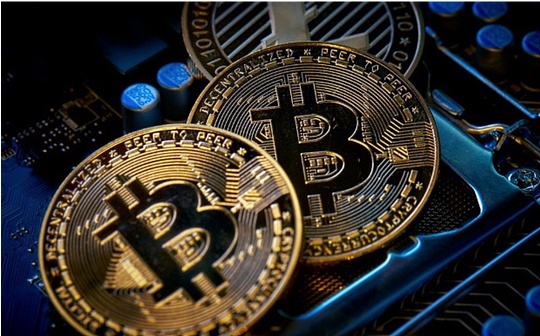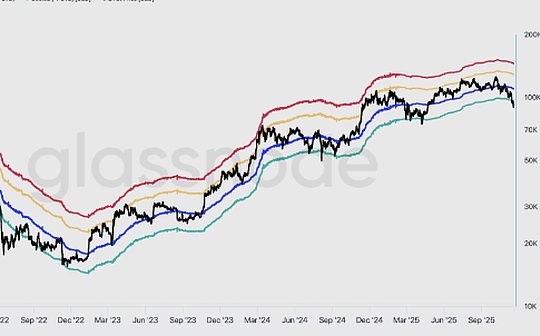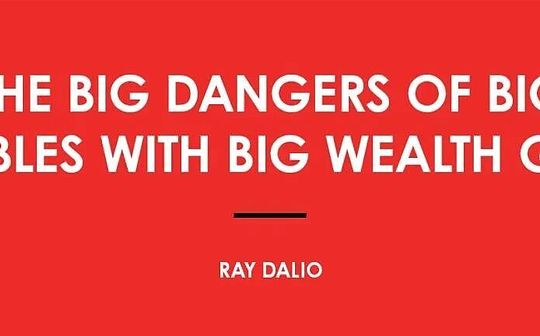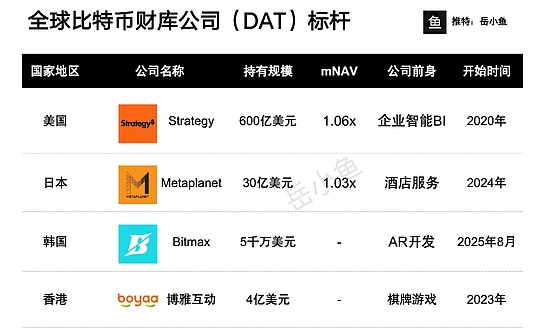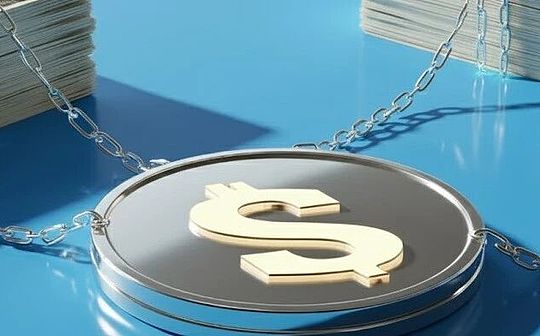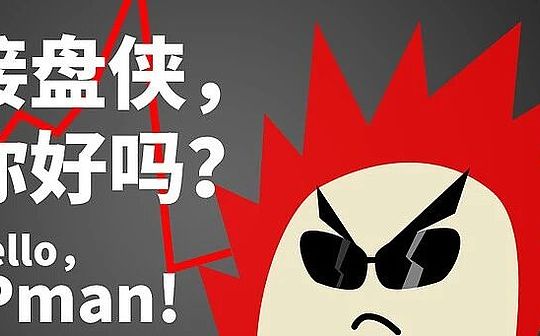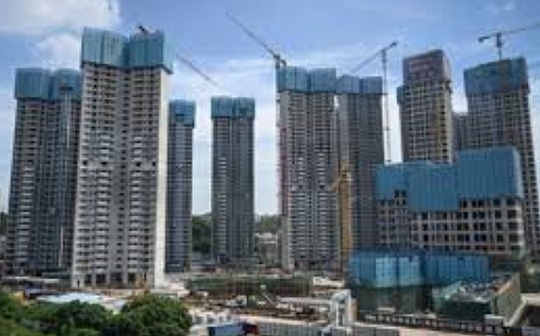
Author: Arthur Hayes, founder of BitMEX; compiled by: 0xxz@Bitchain Vision
Wharton advocates capitalism and American exceptionalism.Students from all over the world were excited, and professors hyped up the benefits of free-market capitalism and a “rule-based” American order of rule that was executed by the cutting edge of the Tomahawk cruise missile.But if you entered the workplace like me in September 2008, you will soon find that most of the education you receive is nonsense.The reality is that this system is not really elite rule—on the contrary, the companies that best get the benefits from the government are ultimately the most financially successful.Capitalism is for the poor.
After seeing which big investment banks flourish and which are shaking after the 2008 global financial crisis, I learned the first lesson about real capitalism (or what I now call corporate socialism).After Lehman Brothers went bankrupt, banks in the United States received government bailouts through direct capital injection.Although European banks received secret financial support from the Federal Reserve (Fed), they did not receive government funding or forced mergers (paid secured by central bank loans) until 2011.So when my analyst class at Deutsche Bank received the first full-year bonus for the calendar year in February 2010, we were inferior to our friends who worked at Bank of America (who pressed F9)few.
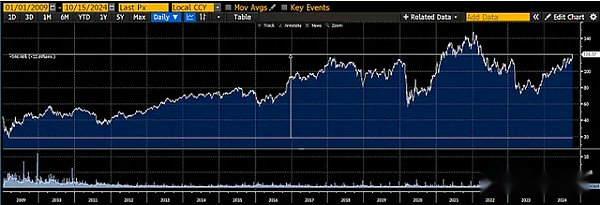
This is the KBW Banking Index, which includes the largest listed commercial banks in the United States.The index rebounded more than 500% from its lows after the global financial crisis in March 2009.
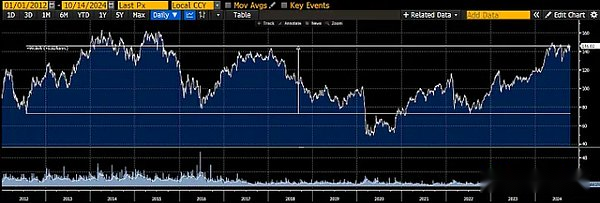
This is the European Stock Bank Index, which includes the largest banks in Europe.The index rebounded only 100% from its post-crisis lows in 2011.
Whatever political authority says, corporate socialism is more profitable and more common in the United States than in Europe.
Remember, kids, the benefits of privatization and socialization losses are the secrets to getting huge bonuses.
Given that China claims its economic system is different and superior to the West, you might think they may have different policies to address their economic problems.Wrong.Ordinary people.
To understand the huge changes China is experiencing, it is necessary to first understand the recent financial crises in the three other major economies: the United States, Japan and the European Union.These economies have encountered serious financial crises due to the bursting of the real estate market bubble.
-
Japan in 1989
-
2008 United States
-
The EU in 2011
China can now also join the list of victims of the bursting of the real estate bubble.The Chinese central government started the process in 2020 by restricting the credit of real estate developers through a policy known as the “Three Red Lines”.
ChatGPT explains the policy:
China’s “Three Red Lines” policy is a regulatory framework launched in August 2020 to curb excessive lending by real estate developers and reduce financial risks in the real estate industry.The policy sets strict thresholds for three key financial indicators: debt-to-asset ratio (excluding prepayments) is below 70%, net debt ratio (net liabilities divided by equity) is below 100%, and cash-to-short-term debt ratioGreater than 1.Developers are classified based on how many of these thresholds the developer violates and limits their allowable debt growth accordingly—developers that meet all criteria can increase debt by up to 15% per year, while developers who violate these three criteria simultaneouslyThe debt level cannot be increased.By implementing these “three red lines”, the Chinese government aims to encourage developers to deleverage and strengthen financial conditions, thereby promoting financial stability.
Like all other victims, the Chinese economy then fell into a liquidity trap or balance sheet recession.Private businesses and households cut spending, reduce economic activity, and save money to repair their balance sheets.When credit demand for households and businesses declines, the standard Keynesian economic prescription—that is, a moderate fiscal deficit and lowering the currency price through a central bank policy rate cut—is ineffective.To prevent terrible deflation, it is needed to monetary and fiscal bazooka.The time it takes to enter panic mode depends on a country’s culture.But don’t get me wrong – no matter what the so-called economic “ism”, every country will end up injecting monetary chemotherapy drugs.
I call this palliative therapy chemotherapy because, while it may cure deflation cancer, it will eventually kill the host.The host is the middle and lower class, who suffer from asset price inflation, but the real economy has not improved significantly.Like modern oncology, this ultimately ineffective monetary chemotherapy is very profitable for a small group of financial witch doctors, headquartered in New York, London/Paris/Frankfurt, Tokyo, and now maybe Beijing/Shanghai.
Monetary chemotherapy is a two-pronged treatment.
First, public funds must be used to recapitalize the banking system.Banks’ balance sheets are always filled with junk real estate loans.The private market will no longer provide any equity capital, which is why the bank’s stock price plummeted and went bankrupt.The government must inject new funds and change accounting rules afterwards to legalize the financial situation of banks lying to the world.For example, Japan allows its banks to hold real estate assets at purchase costs rather than actual current market value, thus maintaining accounting solvency.After government funding, banks can resume expanding the scale of loans, thereby increasing the broader amount of money in the economy.As the amount of bank credit increases, so does nominal GDP.
Secondly, the central bank must print money, which is what is now called quantitative easing (QE).This is achieved by purchasing government debt with printing money.With reliable debt buyers, the government can implement large-scale stimulus plans at all costs.Quantitative easing has also forced reluctant savers to return to riskier financial markets.As central banks absorb all the safest interest-bearing government debt, savers replace their “safe” government bonds by speculating in the financial markets.These activities are imminent, as savers correctly see the upcoming inflationary impact of monetary chemotherapy.Ultimately, this means buying real estate and stocks again.For those who don’t have enough financial assets, they are simply unlucky.
Bankrupt banks were saved because the prices of financial assets (real estate and stocks) that underpin their loan books rose.I call it reinflation, it’s the opposite of deflation.The government was able to increase stimulus because nominal GDP led to revenue growth, while nominal GDP rose due to increased bank-led broad money creation and banks’ ability to issue unlimited debts (the central bank eventually bought it with printing money).For those engaged in financial speculation (that is, you readers), the link between actual economic performance and asset prices is cut off.The stock market is no longer a forward-looking reflection of the economy, but the economy itself.The only important thing is monetary policy and the speed of currency creation.Of course, if you want to be a stock picker, it is important for the government’s specific policies regarding which types of companies are designated to accept capital, but the prices of Bitcoin and cryptocurrencies are mainly affected by the total money supply.As long as fiat currency is created, Bitcoin will soar.It doesn’t matter who the ultimate beneficiary is.
Financial analysts say that the stimulus measures announced by China are still not enough to adjust the scale of the economy.This is true, but recent statements hide some clues that China is ready to inject monetary chemotherapy drugs to cure deflation cancer.This means that Bitcoin will soar in the long run as China revitalizes its banking system and real estate industry.Given that the RMB credit creation will be comparable to the total US dollar printed in the United States in 2020-2021 to cope with COVID.
To prove my point, I will explain the following step by step:
-
Why do modern governments blow up huge real estate bubbles?
-
Analyze the scale of China’s real estate bubble and the reasons why it decided to end the bubble.
-
All signs indicate that they are ready to revive China’s economy.
-
How will the RMB be integrated into Bitcoin.
Social Order
Modern government is built on a wide range of people’s support.In an era when the largest nation-state and its rulers do not rely on organized religion to gain legitimacy, how can the state win over ordinary people to support its rule?The easiest way to eliminate the threat of revolution is to link the financial net worth of citizens to the success of the ruling regime.
The most important financial asset you own – or what you wish to own – is your primary residence.The human body can only survive in very narrow temperature ranges.Fundamentally, our residence is a temperature-controlled structure that allows us to maintain homeostasis.However, if you are on the street, you will definitely feel too hot or too cold, which can lead to death in extreme cases.
Forget the cost of housing – Suppose you save enough money to buy a home for you and your family.Your biggest concern is who will protect your property rights?Without a government that has the right to legally kill those who oppose domestic rules and regulations, a private armed force is needed to safeguard these rights.What can stop a fully armed neighbor from claiming that your land is theirs?When the country is strong and the law is respected, you don’t have to worry about the homeless man stealing your belongings.But when the country is weak, you must be prepared to commit violence against those who deprive you of your property rights.So if you own property, you will naturally trust the government to protect your rights.In return for their protection, you will follow their orders.Ultimately, this means you won’t resist because it will cause financial losses to yourself.
The government’s interest is to make as many citizens as possible become owners, thus linking their financial and physical health to the state.Because energy is expensive and building buildings always requires energy, the government strives to develop plans that encourage private ownership of property, usually through various debt financing plans.Even in China, property rights were one of the earliest things to be reformed, beginning with Deng Xiaoping in the late 1980s and early 1990s.
Let me give a thumbs up to my alma mater.One of the best courses I have ever taken is Housing Policy, taught by former U.S. President Clinton’s deputy secretary of the Department of Housing.I took this course in the first half of 2008, when the subprime mortgage crisis was spreading.We understand the various government programs developed to increase home ownership.The main thing I learned from this course is that the real estate bubble always needs government support and financing.In the United States, the government has vigorously encouraged housing ownership since the Clinton administration (1992-2000), expanding the role of government-supporting entities such as Fannie Mae and Freddie Mae (GSE), from the 1992 “Federal Housing Enterprise Financial Security”and the Strong Act begins.GSE is a publicly listed private company with acquisitive support from the federal government.They underwritten most residential mortgages because they fund loans, just like the federal government.Therefore, Fannie Mae and Freddie Mae are one of the most profitable financial services companies.Banks play their role by making risk-free profits by issuing loans, ultimately passing the risks onto the balance sheet of the public sector.Of course, the dominants of the universe have done too much considering these twisted incentives—but they would never take these risks without the support of the government.
Well…it sounds like the source of funding for local governments in mainland China.China and the United States are united!
Thanks to BCA Research, Ned Davis Research, and Gavekal Research for their wonderful charts on China’s economy.
Real estate with Chinese characteristics
First, let me explain China’s economic model.In order to quickly achieve industrialization, the Chinese government has imposed fiscal suppression on savers through the state-owned banking system to provide capital to state-owned industrial enterprises at a cheap price.If the largest user of bank credit is an industrial enterprise, then the reasonable interest rate for depositors is the percentage of industrial added value.The percentage of industrial added value refers to the proportion of the industrial sector in a country’s GDP, calculated by dividing the added value generated by all industrial activities by the total GDP.
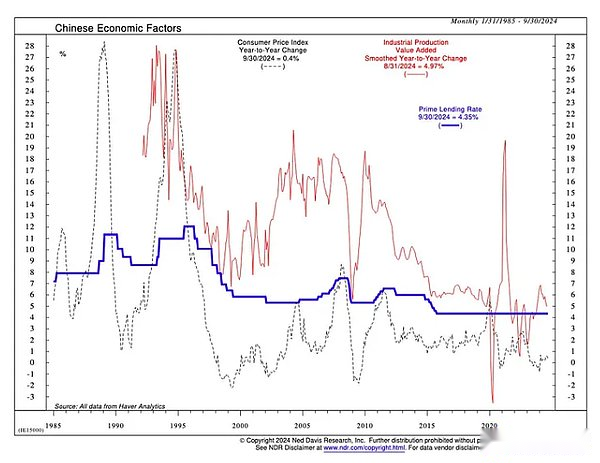 It can be seen that the most preferential loan interest rate is always lower than the industrial added value.This is because the deposit interest rates paid by state-owned banks to ordinary depositors are insignificant – see the figure below.
It can be seen that the most preferential loan interest rate is always lower than the industrial added value.This is because the deposit interest rates paid by state-owned banks to ordinary depositors are insignificant – see the figure below.
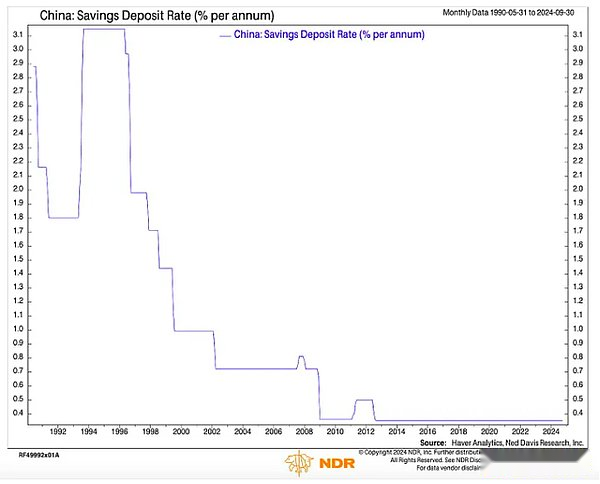 Depositors know they are treated unfairly, but because the yuan is a restricted currency, depositors cannot invest overseas.To get a better return on capital, they can invest in local stocks or real estate markets.
Depositors know they are treated unfairly, but because the yuan is a restricted currency, depositors cannot invest overseas.To get a better return on capital, they can invest in local stocks or real estate markets.
The problem with the stock market is that the best companies are state-owned enterprises.State-owned enterprises receive the cheapest bank credit and are allowed to engage in monopoly acts because they have exclusive licenses to operate in the most profitable industries (telecommunications, oil and gas, mining, etc.).You might think that means that SOEs perform very well.But the return on equity (ROE) of state-owned enterprises is not satisfactory.
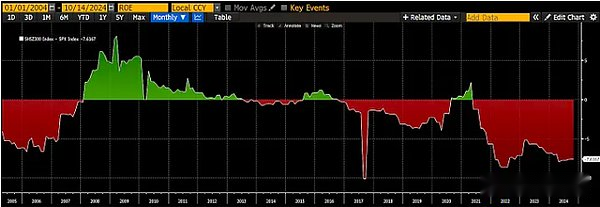
This graph is CSI300 Index ROE minus S&P 500 Index ROE.It can be seen that Chinese stocks perform worse than American stocks.
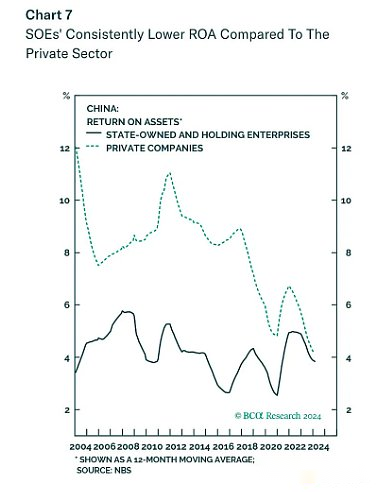 Private enterprises participating in real competition receive higher returns than state-owned enterprises.However, state-owned enterprises are more representative in major stock market indices.
Private enterprises participating in real competition receive higher returns than state-owned enterprises.However, state-owned enterprises are more representative in major stock market indices.

With an index of 100, China’s GDP (green) +1200% vs. CSI300 Index (white) +200%.
Since the stock market really began to develop in the early 21st century, the performance of the stock market has lagged far behind the crazy growth of China’s economy (as shown in the picture above).Ordinary Chinese are not stupid, so stocks are not the first choice to increase savings.Instead, they turned to the real estate market.
To re-establish China (China, literally “the central kingdom”)’s global dominance, the key can only be achieved through global manufacturing strength.This means letting farmers leave the farm and enter the city to make export goods.Therefore, each five-year plan has an urbanization goal.
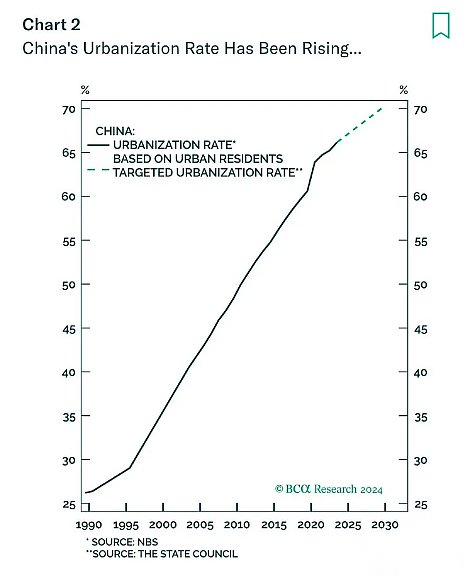
If hundreds of millions of people are to be moved from rural areas to cities in just a few decades, a large amount of residential and industrial real estate is needed.The first way to make money in real estate is to sell the land to developers.Local governments own their own land and sell it to developers through lease rights.Since the central government leaves most of its income tax revenue to itself, local governments mainly raise funds by selling land.As urbanization progresses and economic growth advances, land becomes more valuable and sales revenues also surge.The central government has also set quotas for how much debt local governments can issue each year.Often, these debts are secured with their land reserves.Therefore, the government’s finances are directly related to rising housing prices.


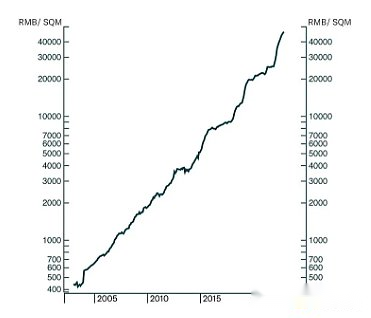
Land prices have risen 80 times over the past 19 years, with a CAGR of 26%.
The average person gets rich by saving and then buying one or more apartments.From the early 1990s to 2020, real estate prices only rose but not fell.Banks generally do not provide any type of consumer credit and are therefore more than happy to issue loans with real estate as collateral.The net worth of an average family is almost entirely linked to rising real estate prices.
As house prices rise, all stakeholders make money.After meeting the initial demand for the rapidly urbanized population, the market continued to build apartment units because it was encouraged and banks felt that it was the only place where credit could be issued safely.What followed was an unprecedented real estate bubble.
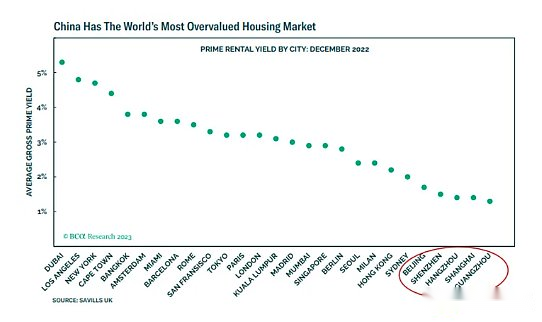
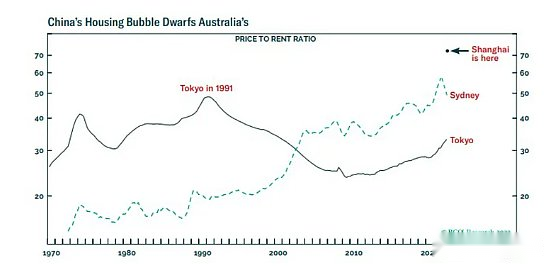
When the vast majority of comrades can’t afford to buy a house, the social structure will be fragmented.A decline in birth rates is a symptom of real estate bubble disease.Young people are poor, but given the high real estate prices, the only house they can afford is rubber houses.In addition, too much bank credit flows into real estate rather than funding new technology development.The state shifts funds from non-productive speculative real estate development to high-tech manufacturing.
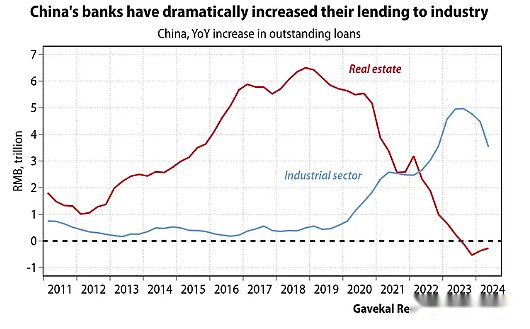 In the mid-2010s, China began to talk tough about controlling the real estate market, but in reality, the bursting of the bubble was accompanied by a series of risks.Every large state-owned bank and industrial enterprise has huge exposure to the real estate market.A large portion of the assets in the bank loan book are residential property loans issued to families or developers.One of the largest end customer groups of companies that produce air conditioners, steel, cement and other commodities is real estate developers.Furthermore, the central government continues to leave most of its tax revenue to itself so that the balance sheet of the central government looks strong, meaning that if land prices do not continue to rise, local governments will not be able to achieve their stated growth targets.Punching the real estate bubble will destroy ordinary households, banks, industrial enterprises and local governments.If the market is lost in the downside, social harmony may be destroyed.
In the mid-2010s, China began to talk tough about controlling the real estate market, but in reality, the bursting of the bubble was accompanied by a series of risks.Every large state-owned bank and industrial enterprise has huge exposure to the real estate market.A large portion of the assets in the bank loan book are residential property loans issued to families or developers.One of the largest end customer groups of companies that produce air conditioners, steel, cement and other commodities is real estate developers.Furthermore, the central government continues to leave most of its tax revenue to itself so that the balance sheet of the central government looks strong, meaning that if land prices do not continue to rise, local governments will not be able to achieve their stated growth targets.Punching the real estate bubble will destroy ordinary households, banks, industrial enterprises and local governments.If the market is lost in the downside, social harmony may be destroyed.
By 2020, the state believes that rampant real estate speculation can end and all its harmful effects.Then three red line policies were introduced.Soon, the real estate developer with the highest leverage ratio stopped building and completion of the house and defaulted on overseas bonds.Evergrande Group is a highly-anticipated Chinese real estate developer, an example of bankruptcy after its credit channels were restricted.
Before continuing the timeline of this story, I want to quickly talk about a lesser-known quirk in the Chinese real estate market and its impact on what types of policy measures will successfully end the crisis.In China, most apartments are pre-sale houses.You have to pay a cash deposit first and then pay the balance after you get the mortgage a few years before the property is completed.Essentially, the real estate developer is a Ponzi scheme operator.Full payment for units that have not been delivered will be used to pay for the completion of the old unit.Real estate developers also use this pre-sale cash as collateral to get bank credit because they still need more money to complete older, old-fashioned projects and purchase land from local governments for new projects.
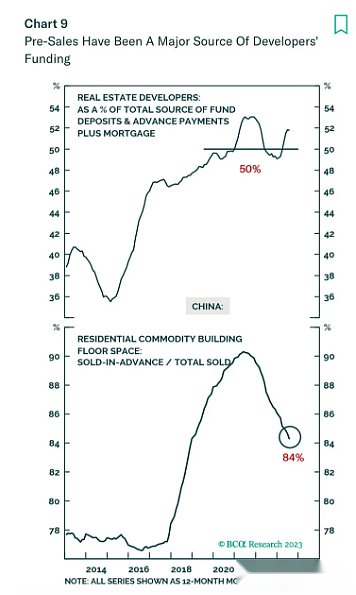
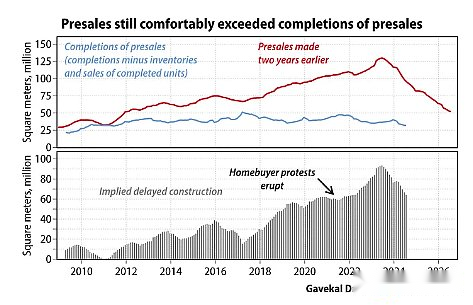
When banks were asked to slow down loans to heavily indebted developers, people began to wonder if buyers could receive unfinished homes.If ordinary Chinese families do not believe that real estate developers will complete the construction of their houses, they will not buy pre-sale houses.Without pre-sale funds, real estate developers cannot complete the construction of old houses.The end result is that developers must stop construction, and confidence in the entire real estate market structure collapses, and everyone will suffer losses.
The Chinese government responded early in the crisis, instructing banks and local governments to provide loans to real estate developers in order to complete the construction.However, there is a huge proxy problem here.While the central government has supreme power on paper, they rely on officials to risk their professional orders.
Imagine you are managing a local government.If you drive economic growth, you will be promoted, but if you lose money, you will be investigated.Investigations usually appear suddenly after years of suspected behavior.Therefore, there is no benefit to risking, and even if the central government asks you to lend, there is nothing you can do.

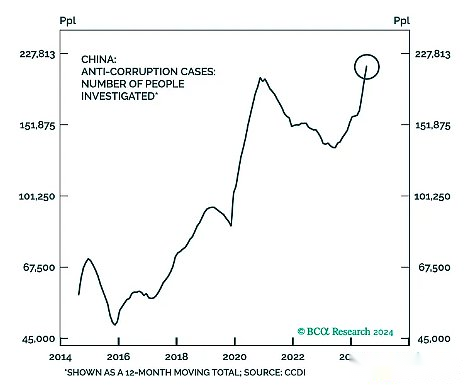 The central government continues to issue higher quotas, allowing real estate developers to obtain more credit, but these credits are not dispersed.Another option is for the government — whether central or local — to participate in the construction, completing millions of unfinished homes to restore market confidence.They haven’t done that yet, I guess it’s because for a top-down central government, such a task is too complicated considering the millions of square feet of houses that need to be completed.
The central government continues to issue higher quotas, allowing real estate developers to obtain more credit, but these credits are not dispersed.Another option is for the government — whether central or local — to participate in the construction, completing millions of unfinished homes to restore market confidence.They haven’t done that yet, I guess it’s because for a top-down central government, such a task is too complicated considering the millions of square feet of houses that need to be completed.
 This brings us to the current moment.Using traditional monetary policies, it can take decades to lower prices and restore confidence.
This brings us to the current moment.Using traditional monetary policies, it can take decades to lower prices and restore confidence.
As China’s economy is slowing rapidly, it’s time to ask a witch doctor to treat it.
Reinflation
Let’s browse some frustrating charts to see the impact of the bursting of the real estate bubble on the Chinese economy.
Listening to economists’ pessimistic comments about China’s economy, you may think that Beijing has been standing by and doing nothing.But that’s not the case.
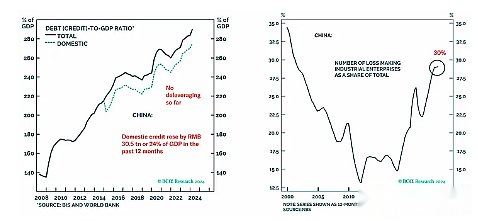
The absolute number of fiscal and monetary stimulus measures is huge.But due to the serious overcapacity of the economy, this money is enough just to keep it running.The rising debt-to-GDP ratio (left image) is proof that this allows zombie state-owned enterprises to make ends meet (right image) and avoid large-scale layoffs.
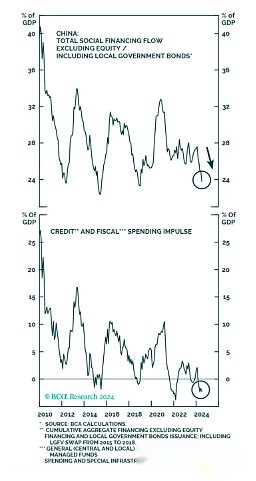 But when you just poked the biggest real estate bubble in human history, you need chemotherapy to stop deflation.Everything is relative, and the current measures are not enough to generate positive credit and/or fiscal spending impulses relative to the scale of the economic black hole torn by the collapse of the real estate market.
But when you just poked the biggest real estate bubble in human history, you need chemotherapy to stop deflation.Everything is relative, and the current measures are not enough to generate positive credit and/or fiscal spending impulses relative to the scale of the economic black hole torn by the collapse of the real estate market.
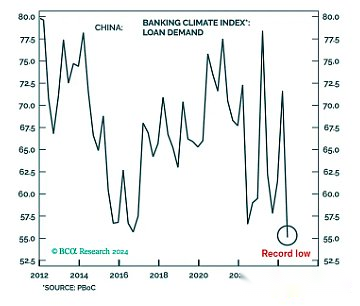
 Even with all these stimulus measures, loan demand remains at an all-time low.This is because the real interest rate is still too high.
Even with all these stimulus measures, loan demand remains at an all-time low.This is because the real interest rate is still too high.
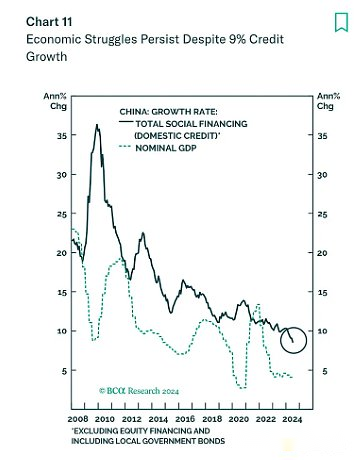 China’s broad currency growth is at its historical lowest level, and nominal GDP growth has slowed down sharply.
China’s broad currency growth is at its historical lowest level, and nominal GDP growth has slowed down sharply.
When economic activity shrinks as deflation clears overcapacity, the real problem facing the central government is a group of young, educated, unemployed, propertyless, and no attractiveness to the opposite sex.
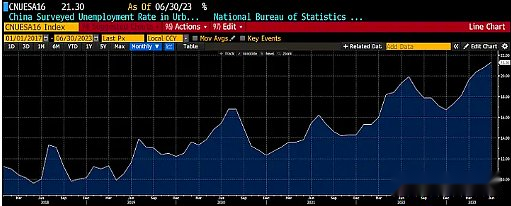 If China were the United States or the European Union, it would go to war with another country and send these young people into wartime meat grinders.But large-scale foreign military adventures are not China’s genes.China needs to revitalize economic activities by implementing quantitative easing and increasing broad monetary growth so that ordinary college-educated students can find jobs.
If China were the United States or the European Union, it would go to war with another country and send these young people into wartime meat grinders.But large-scale foreign military adventures are not China’s genes.China needs to revitalize economic activities by implementing quantitative easing and increasing broad monetary growth so that ordinary college-educated students can find jobs.
This summer, the People’s Bank of China (PBOC) updated its toolkit to be able to start open market operations in the government bond market.
We will gradually include the secondary market treasury bond trading in our toolbox.Recently, the market is paying more attention to this and is constantly enriching and improving the method of issuing base currency. In the past period of time, it has been passively placed through foreign exchange deposits. After 2014, the number of foreign exchange deposits has decreased and it has been actively placed through open market operations, MLF and other tools.Base currency.
It should be noted that incorporating treasury bond transactions into the monetary policy toolbox does not mean quantitative easing, but as a channel for the issuance of base currency and liquidity management tools. Treasury bond transactions (including treasury bond transactions) will work together with other tools to createGood liquidity environment.
China’s current monetary policy position and future monetary policy framework evolution
Today, quantitative easing is such a dirty word because the people know that it means inflation, and that’s bad news and bear markets.Regardless of what the People’s Bank of China wants to call it, starting this August, they have increased their local government bond holdings from 1.5 trillion yuan to 4.6 trillion yuan.This is the first time that the People’s Bank of China has printed money to buy government bonds since 2007.
The only way for China to raise fiscal stimulus to the level needed to get rid of the deflation trap is to issue large amounts of local and central government bonds.Although China’s bond yields are at an all-time low, they are still too strict from a practical point of view.The currency price needs to drop to zero and the money supply must increase significantly.This can only be achieved if the People’s Bank of China implements quantitative easing policies.
The Federal Reserve, the European Central Bank (ECB) and the Bank of Japan (BOJ) all started quantitative easing by buying a small amount of government bonds.But they eventually believed in religion and issued a large amount of money to get rid of the deflation trap.China and the People’s Bank of China will do the same.Don’t let the initial moderate intervention fool you – the People’s Bank of China will eventually issue tens of trillions of yuan to adjust the scale of China’s economy.
Quantitative easing policies are about to be implemented in China, but this is only half the success.Banks need to lend again to drive high growth in nominal GDP.
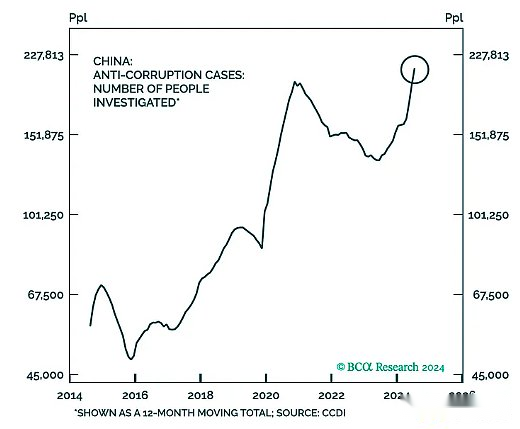 Let’s look back at the motivations of state-owned bank executives.They don’t want to issue a large number of new loans, some of which inevitably turn into bad debts, and are investigated for corruption a few years later.They need to know that the central government will support them.
Let’s look back at the motivations of state-owned bank executives.They don’t want to issue a large number of new loans, some of which inevitably turn into bad debts, and are investigated for corruption a few years later.They need to know that the central government will support them.
One sign that the People’s Bank of China will encourage bank credit growth is that in a recent series of monetary policy measures, the Chinese government announced that it would borrow money and inject this capital directly into the banking system.Given that all banks are owned by the state, borrowing money from left to right is a bit theoretical.But I think this is completely superficial.The central government has shown through its actions that if bank managers increase loan growth, they will not face personal risks.
In the recent communiqué, the Central Committee will forgive the mistakes made by lower officials in their actions to improve the economy.By eliminating the risk of personal greed, officials can start lending, with the amount of lending enough to drive economic development.
Bank of China’s financial metrics involving non-performing loans (NPLs) look a bit confusing.According to the Bank for International Settlements, non-performing loans in the banking system averaged about 22% after the real estate crisis.Bank of China reported a non-performing loan ratio of only 2%.Are Chinese banks special?I don’t think so.There is a reason why Chinese banks want to lend only to projects directly supported by the government.From a cryptocurrency perspective, imagine a bank’s loan book that only includes loans to FTX, Three Arrows Capital, BlockFi, Genesis, and Voyager.If the bank reported the lowest non-performing loan ratio of any bank, would you still trust them after learning that all the companies it borrowed were bankrupt?In order to revive the animal spirit of the banking industry, the central government needs to repair the bank’s balance sheet through capital injection.
Another policy tells me that the central government is ready to liberalize banks so that they can issue credit widely, which is the total salary cap for bankers.Due to recent government orders, I think the maximum total compensation for financial services employees is $420,000, whether they work in state-owned enterprises or private banks.There was no such restriction when the U.S. bailed out its banking industry; JPMorgan CEO Jamie Dimon made $17.6 million after his bank received government bailout in 2009.The central government knows that inflation is extremely profitable for the banking system, especially if the government supports basically all loans.They also knew that wealth would not trickle down, which caused anger among the civilians.
The central government is quietly telling the market that it is injecting monetary chemotherapy drugs.You just need to listen.Many analysts believe that one side effect is the depreciation of the yuan against the US dollar.
RMB
Russell Napier wrote an excellent article explaining why he thought China was ready and willing to inject himself into the monetary policy I described in the previous section.He also believes that China will tolerate the depreciation of the RMB due to the sharp increase in the supply of RMB.I don’t know if I believe the central government is willing to let the RMB depreciate significantly, because it will trigger capital flight.But I don’t think the yuan will depreciate so much against the US dollar.Therefore, this prediction will not be tested.
We all know that China is the world’s factory.Therefore, China’s trade surplus has continued to hit record highs.But if you study the data carefully, you will find that China’s trade surplus (export minus imports) has increased not because exports have increased, but because the import intensity of China’s economy is declining, and China can pay in RMB instead of US dollars.A larger proportion of imported goods.
To illustrate my assumption, assume that China initially had a total monthly export of US$100 and imports of US$50; i.e., a trade surplus of US$50.Now, the import intensity of its export economy has declined – for example, China used to need to buy auto parts from abroad, but now most parts are produced domestically.Even if the volume of exported commodities does not increase, the trade surplus will rise.To achieve the same value of $100 export, you only need to import $25.As a result, the surplus rose to $75.The second way for the surplus to rise is if the import volume is the same, but now half of the imports are paid in RMB.This will also reduce imports to $25, while the surplus will increase to $75.
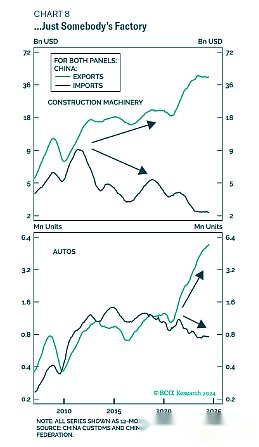
The chart above illustrates how China exports more construction machinery and cars by reducing imports.
The commodity that China lacks the most is energy, but now China can use the RMB instead of the US dollar to buy goods from countries such as Saudi Arabia and Russia.
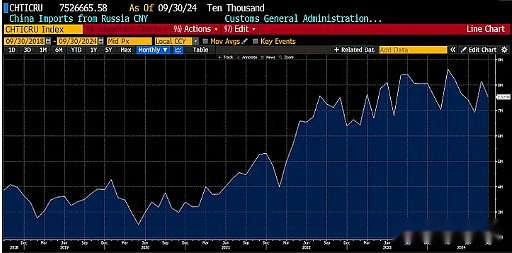 China cannot decide terms of trade until the West steals Russian dollar/euro and imposes sanctions after the outbreak of the Ukrainian war in February 2022.But now, Russia has no choice but to pay in RMB as required and supply energy to China at a discounted price.
China cannot decide terms of trade until the West steals Russian dollar/euro and imposes sanctions after the outbreak of the Ukrainian war in February 2022.But now, Russia has no choice but to pay in RMB as required and supply energy to China at a discounted price.
As China increases its domestic RMB supply and promotes economic growth, inflation will inevitably rise.However, given that China produces more goods domestically and pays for energy costs with the RMB, rising inflation will not lead to a significant depreciation of the RMB against the US dollar, as it used to be.
The last reason why the RMB will not depreciate significantly is that while China reinflation is in place, the United States will implement an industrial policy of a weak dollar, no matter who wins the presidential election.I know Trump and Harris are trying to get people’s attention to their differences, but essentially they will both print money and distribute the money to key industrial sectors in the United States.

I don’t necessarily agree that Harris will spend less than Trump, but no matter who wins, we’re talking about trillions of dollars in additional fiat money supply coming to the market in the coming years.This will certainly lead to structural weakness in the US dollar.
China will not feel the negative side effects of domestic currencies when implementing this reinflation policy.There are obvious signs of China printing a large amount of RMB.What is the antidote for civilians who will witness credit creation growth (and this does not necessarily depend on the enhancement of the real economy)?Bitcoin!
Come on Bitcoin — Let’s Go Bitcoin
The Chinese are one of the most resourceful nations on earth.As the central government encourages asset prices to rise, they will not let their precious RMB savings be idle.Bitcoin is not an unfamiliar concept for residents of middle- and high-income cities along the coast.While exchanges are banned from offering visible Bitcoin/renminbi trading pairs, Bitcoin and cryptocurrencies are still thriving in China.
The market has returned to its origins as peer-to-peer (P2P).In the past, when the three major Chinese exchanges (OKCoin is now OKX, Huobi and Bitcoin China) dominated, it was always a challenge to invest in exchange accounts with RMB.Sometimes users can remit money directly from their domestic Chinese bank accounts, while sometimes they have to go through a complex voucher scheme.In any case, the Chinese found ways to transfer the yuan from their local bank accounts to the exchange for trading.
Now, I hear that China once again has a vibrant P2P market.All major Asian spot exchanges, such as Binance, OKX and Bybit, are doing big business in the mainland.These exchanges operate P2P message boards where local traders help people trade cryptocurrencies.It’s like a Chinese version of LocalBitcoins.The key is that for an aspiring Chinese, it is relatively simple to trade RMB for cryptocurrency.
The reason China shuts down Bitcoin/RMB pairs (I’m just guessing here) may be because they don’t want a smoke alarm, exposing the impact of their currency depreciation plans.Such alerts may incentivize investors to choose Bitcoin as a store of value rather than stocks or real estate.Given that the Chinese government knows it cannot ban Bitcoin and that Bitcoin and cryptocurrency ownership are not banned in China (as opposed to some misleading financial media claims), the central government would rather keep it away from people’s sight and mind.So if my prediction is correct, I will not have an obvious statistic that clearly tracks the flow of RMB into the Bitcoin ecosystem.Apart from the Green Cross, I can only know that changes are happening through word of mouth.
There will certainly be no inflow of funds for Bitcoin Exchange-Trade Funds (ETFs) listed in Hong Kong.If funds flow into the Hong Kong market through stocks, they will not be used to buy domestic stocks or real estate.This is why mainlanders will be banned from buying Hong Kong Bitcoin ETFs.Condolences to all issuers who pay expensive advertising fees at Hong Kong metro stations – the central government will not make it so easy for people to access Bitcoin.
While I don’t have domestically listed Bitcoin tracking products or inflow charts of Bitcoin/RMB price quotes for review, I know stocks and real estate are not performing as much as the growth of the central bank’s balance sheet.
 Here is a chart of Bitcoin (white), gold (gold), S&P 500 (green), and Keith Schiller U.S. Real Estate Price Index (magenta), all divided by the Fed’s balance sheet index of 100.Bitcoin outperforms all other risky assets, so you can’t even distinguish the returns of other assets on the right axis.
Here is a chart of Bitcoin (white), gold (gold), S&P 500 (green), and Keith Schiller U.S. Real Estate Price Index (magenta), all divided by the Fed’s balance sheet index of 100.Bitcoin outperforms all other risky assets, so you can’t even distinguish the returns of other assets on the right axis.
As you know, this is my favorite chart.No major risk asset class can perform better in the face of currency depreciation like Bitcoin.Investors know this instinctively, and when you think about how to protect the purchasing power of savings, Bitcoin will stare at you like Kwisatz Haderach.
For those who think the market will immediately recognize the future and promote Bitcoin accordingly, I’m sorry to let you down.It will take time for the People’s Bank of China to quantitative easing and bank credit growth to accelerate again.Chemotherapy takes time to kill patients.During these initial stages, Chinese depositors responded as I expected: Buy oversold domestic stocks and significantly discounted apartments.
So far, economists have been pessimistic about the size and size of the stimulus package, which provides a great opportunity to buy.Because when ordinary wealthy people in coastal areas decide that they must hold Bitcoin regardless of the price of the RMB, the upward fluctuation of Bitcoin price will go back to August 2015, when Bitcoin was suddenly depreciated by the People’s Bank of ChinaFrom $135 to $600 – in less than three months, the price of Bitcoin has almost increased by 5 times.

